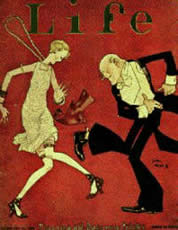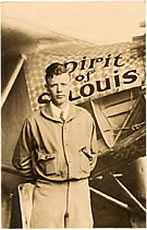

The Roaring Twenties—the jazz age—were a decade of enormous social change in America, although myths about the era sometimes exaggerate the reality of that strange and often troubling time. While consumerism expanded and many new inventions—radios and telephones, for example—the economic progress did not touch everyone. New gadgets and inventions became everyday items for average Americans, but it was also a time of much bitterness, conflict and disappointment. The morale crusade to end the evils of alcohol resulted in some benefits, but it also opened new areas of crime.
The 1920s were also known as a time of revolution in manners and morals, when young men, and especially young women, threw off many of the social restrictions of the Victorian era and began conducting themselves in ways that scandalized the older generations. Young women liberated themselves in everything from hairstyles and clothing to deportment and public, smoking cigarettes and drinking from flasks of illegal bootleg whiskey and bathtub gin. The 20s were known as the jazz age and saw a the rebirth of the Ku Klux Klan, divisions between town and country that went beyond mere style, the Harlem Renaissance, an enormous growth in production of items once seen as luxuries such as automobiles, and a general feeling of near euphoria, as if for the middle and wealthy classes, at least, things would just keep going up.

Undercurrents in the Twenties were ominous. The economic boom of the twenties left many Americans in the dust, America's traditional openness to immigration was severely cut back, and racial tensions rose, accompanied by a resurgence of the Ku Klux Klan. Prohibition, the “noble experiment,” caused ordinary citizens—not to mention countless underworld figures such as Al Capone—to resort to criminal behavior, even as government often winked and looked the other way. Yet it was fun while it lasted—for many. The twenties saw Charles Lindbergh fly solo across the Atlantic and Babe Ruth hit 60 home runs. But it also saw the Scopes trial and the execution of Sacco and Vanzetti following their famous murder trial.
The stock market crash of 1929 ended the dreams of great wealth for many and ushered in the Great Depression of the 1930s. Although the crash was not the cause of the Depression, it had a triggering effect, and the underlying economic weaknesses in the American economy brought on a period that devastated millions of Americans, including the affluent. It was a time of upheaval and revolution, and as Dickens said of an earlier revolution, in many ways it was the best of times and the worst of times. Welcome to the Roaring Twenties.

Readings
Resources

| Sage History Home | Interwar Years Home | The Great Depression | Updated May 3, 2021 |